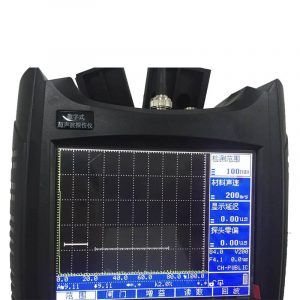Ультразвуковой дефектоскоп: верный помощник неразрушающего контроля
В современной промышленности, качество и безопасность продукции имеют первостепенное значение. In order to ensure the integrity of materials and components, non-destructive testing technology came into being. Среди них, the ultrasonic flaw detector as a powerful tool, widely used in the field of engineering, it can quickly and accurately detect the defects inside the material, thus ensuring the quality and safety of the product.

Как это работает:
The principle of the ultrasonic flaw detector is based on the propagation and reflection of sound waves. Конкретно, it uses pulse reflection technology to emit ultrasonic waves through a probe into the interior of the object under test. When the ultrasonic wave encounters a heterogeneous interface (such as a defect), it is reflected. The reflected signal is received by the probe and forms an echo on the display screen. The height of the echo is related to the depth and size of the heterogeneous interface. The deeper the depth, the lower the defect echo, the smaller the defect, and vice versa. This principle enables ultrasonic flaw detectors to accurately locate and evaluate internal defects without having to destructively inspect materials.
Ультразвуковой дефектоскоп: верный помощник неразрушающего контроля
Область применения:
Ultrasonic flaw detector is widely used in industrial field. It can be used in the following industries and applications:
Aerospace – Used to detect cracks and fatigue damage in aircraft components to ensure the safe operation of aircraft.
Нефтехимия – Used to detect corrosion and cracks in pipes, tanks and equipment to prevent leaks and accidents.
Manufacturing – Used to detect defects in welds, castings and forgings to ensure the quality of manufactured products.
Metal processing – Used to detect cracks and pores in metal materials to ensure the performance of parts.
Medical – for medical imaging, such as ultrasound, for diagnosis and treatment.
Строительство – Used to detect defects in concrete structures and ensure the safety of buildings.
Advantages and Application conditions:
Ультразвуковой дефектоскоп: верный помощник неразрушающего контроля
The ultrasonic flaw detector has the following advantages:
Non-destructive testing: does not destroy the material, can be tested during the production process or product use.
Высокая точность: Small size defects can be detected to improve product quality control.
Multi-material applicability: Suitable for a variety of materials such as metals, composites and plastics.
Real-time detection: real-time display of detection results, повысить эффективность работы.
Однако, ultrasonic flaw detectors also have applicable conditions, mainly including:
The material to be measured is a conductive material, например, металл.
Ультразвуковой дефектоскоп: верный помощник неразрушающего контроля
The thickness of the measured object is not less than 4mm, and 6mm and above are generally recommended.
The structure of the object to be measured should not be too complex or irregular.
As an effective and accurate nondestructive testing tool, ultrasonic flaw detector provides important support for the industrial field. It helps companies ensure product quality, повысить производительность, and reduce safety risks. When selecting and using an ultrasonic flaw detector, it is important to understand its principle, application field and applicable conditions in order to fully realize its potential and ensure the quality and safety of the product. Ultrasonic flaw detectors have become a powerful assistant in the field of modern engineering, helping all walks of life to achieve greater success.
